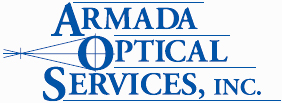What is an optician?
Our opticians are trained to properly fit your eyeglasses. They read prescriptions written by your eye doctor and suggest eyeglasses that are best suited for you and your workplace. They take eye measurements assuring proper lens placement in the frame and confirm the accuracy of the finished glasses.
Why are safety eyewear fittings important?
Proper fit ensures maximum eye protection. Safety glasses should rest firmly on top of the nose and close to, but not against, the face. If the glasses slide down, even a bit, the user will lose some protection. Your safety glasses have a three point fit, meaning the frame should touch the face in three places – at the nose bridge and behind each ear. Temples should wrap around the head, with slight pressure behind the ear, not above the ear.
Why are my safety glasses fogging up?
Typically, your safety glasses fog up when they are exposed to an extreme variation in temperature or humidity – like when someone drives a forklift from inside a warm factory out on the loading dock in the winter. But it can also happen when you’re working hard physically and your body temperature rises compared to the air around you. This can be avoided by treating your safety eyewear with an anti-fog coating. Ask your optician about that option.
Can contact lenses be worn at work?
Each workplace will decide if contacts are appropriate for their environment. If you are wearing contacts, you have no safety protection unless you wear non-prescription safety eyewear as well. Where safety eyewear is required, it is recommended that contact wearers have a pair of prescription safety glasses in case of loss of contact.
How should I maintain my protective eyewear?
- Clean your safety glasses daily
- Follow the manufacturers instructions
- Avoid rough handling that can scratch lenses
- Store your safety glasses in a clean, dry place where they cannot fall or be stepped on
- Keep them in a case when not being worn
- Replace scratched, pitted, broken, bent or ill-fitting glasses
- Damaged glasses interfere with vision and do not provide protection
- Replace damaged parts only with identical parts from the original manufacturer to ensure the same safety rating
- NEVER LEAVE SAFETY EYEWEAR IN CAR DURING EXTREME HEAT OR COLD
I have a small head, can I be fitted with safety eyewear?
There are hundreds of prescription safety frames available. Visit an independent safety lab for selections from many different vendors. It is important that you have a good fit and a safety frame that can carry your particular prescription. The type of work and environment can also dictate which frame style would be your best choice.



